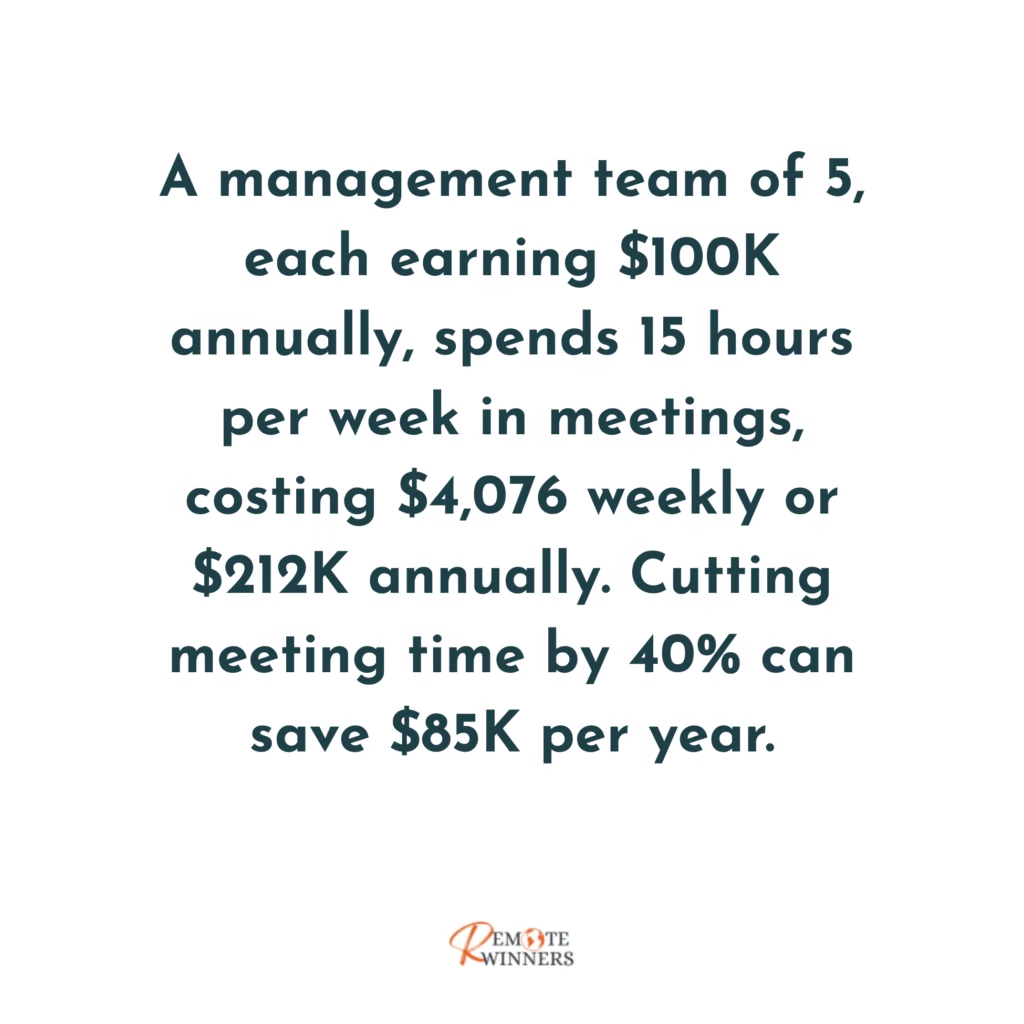
Booking a short meeting to discuss something urgent can be an efficient way of communicating with your colleagues and getting things sorted. However, one of the major challenges employees face when working remotely is having to participate in frequent meetings. Having a packed calendar with frequent meetings tarnishes your ability to carry out focused work. The trouble is, the impact of loss of focus is not quite apparent to the outside world when you are on your own, working remotely.
A report from an intelligent productivity and time-blocking app, Reclaim.ai for Google Calendar, carried out a study using anonymised calendar app data and more than 15,000 employees from different verticals. The report found that the workers now spend above 25% more time in meetings, compared to the pre-pandemic month of February 20201. According to Fellow.app2, the average employee spends 11.3 hours in meetings each week, or the average percentage of the workweek spent in meetings is 28.3%.
We surveyed 182 senior managers in a range of industries: 65% said meetings keep them from completing their own work. 71% said meetings are unproductive and inefficient. 64% said meetings come at the expense of deep thinking. 62% said meetings miss opportunities to bring the team closer together.
https://hbr.org/2017/07/stop-the-meeting-madness

There are no hard and fast rules about how much or how little meetings are productive or not. However, if you are constantly juggling between meetings and your focused work, you are probably already in a situation where frequent meetings are encroaching on your quality of work.
However, the good thing is that there are techniques you can follow to keep meetings to a minimum and achieve higher productivity by taking back your focused time.
Assess your meetings
Review your meetings and evaluate whether those can be easily replaced by asynchronous messages, such as sending an email or a chat message. The time it takes to drop a message and communicate over a chat/email can be significantly lower compared to a meeting session.
Cancelling recurring meetings
You might find recurring meetings in your calendar that are either too frequent or add little to no value. You could probably achieve the same level of productivity and team bonding with fewer recurring meetings or shorter recurring meetings.
Meeting cost calculator
A meeting cost calculator is a tool designed for organisations to assess the financial implications of their meetings. It works by analysing specific inputs such as the number of participants, average salaries, and the duration of meetings to calculate the total cost.
In your next meeting, run the Meeting Cost Live web page3 in the background and find out how much money you spent during the meeting.
No meeting Wednesdays
It doesn’t have to be Wednesdays, however; locking a day in the week without meetings helps employees do focused work without interruptions.
Meeting cleanup day
You can dedicate a day once a year or twice a year to go through your calendar and assess which meetings are required. If you are a participant, you can use this day to assess whether your participation is required or not. However, you must communicate with the meeting organiser if you feel your participation is not required or can be optional.
Have high meeting standards
Ensure your meetings are short, have clear objectives and an agenda, and only the necessary people are invited. Avoid inviting people as “optional” if you are unsure about the importance of their participation.
Embrace asynchronous communication
Use asynchronous communication methods such as chat applications or email if possible. You can even record a video to share instead of booking everyone’s calendar.
In a Nutshell
Meetings are unavoidable when working in a remote setup. However, too many meetings have the potential to distract your workforce and produce low-quality output. Therefore, when it comes to scheduling meetings, either 1:1 or which includes multiple people, we have to be mindful. It is important to evaluate and assess alternatives to find out whether the same can be achieved without necessarily scheduling a meeting.
📌 Why Remote Winners?
At Remote Winners, we understand the unique challenges of remote work. From communication breakdowns to work-life balance struggles, we’ve seen it all—and we’re here to help. Whether you are a remote employee, team leader, or business owner managing a distributed workforce interested in improving your remote working experience, remote team dynamics, or interested in exploring tailored remote working best practices, get in touch via Contact Us.
We hope you enjoyed this post 👍. Any thoughts on how to tackle frequent distracting meetings? Drop a comment below to get involved!



